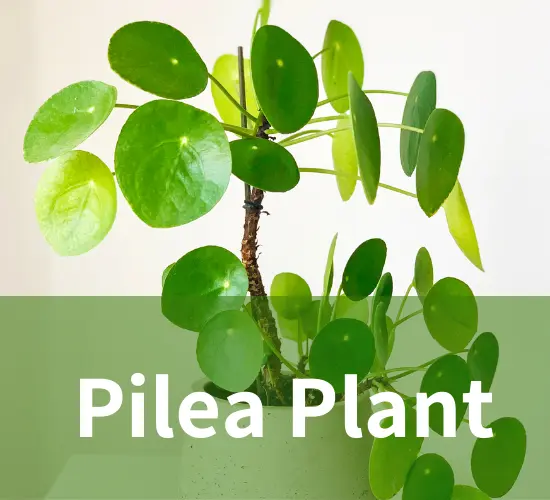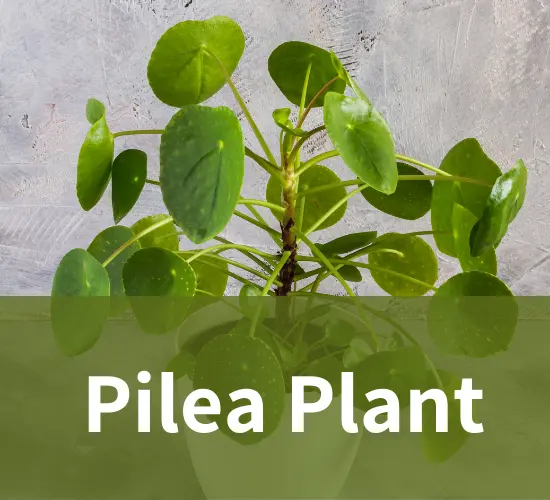Table of Contents
Gardening with Pilea Plants
Pilea Peperomioides, a genus of plants known for their vibrant green foliage and adaptability to various light conditions, offer an easy and low-maintenance option for adding greenery to any home.
Whether you are an experienced plant enthusiast or just starting out, caring for Pilea plants can be a fulfilling and rewarding experience.
This article will provide you with valuable insights and tips on how to care for these thriving green beauties, allowing you to enjoy the benefits of indoor gardening without the hassle of high-maintenance plants.
The Pilea family encompasses a range of plant varieties, each with its own unique characteristics and charm.
From the classic Pilea with its bright green, coin-shaped leaves to the striking Pilea Moon Valley, these plants can effortlessly enhance the aesthetic appeal of any living space.
With their fast growth rate and ability to adapt to different lighting conditions, Pilea plants are an excellent choice for those seeking a low-fuss, yet visually striking addition to their home.
Whether you have a spacious living room or a compact apartment, Pilea plants can thrive and flourish, making them an ideal choice for any home.
In the following sections, we will delve into the specific care tips and plant varieties that will help you successfully nurture and maintain these thriving green beauties.
So, let’s embark on this journey of easy Pilea care and discover the joy of nurturing these freedom-inducing plants in your own home.
Key Takeaways

- Pilea plants are low-maintenance and can adapt to various light conditions.
- They prefer bright, indirect light and should be rotated regularly to prevent lopsided growth.
- Watering should be done when the top 75% of the soil is dry, and excess water should be discarded.
- Pilea plants benefit from occasional trimming and can be propagated through cuttings.
What is Pilea?
Pilea, known for its bright green, coin-shaped leaves, is a low-maintenance plant that can adapt well to various light conditions and is fast-growing. It is a popular choice for indoor gardening due to its many benefits.
One of the main advantages of having a pilea plant is its ability to thrive in dry conditions. This makes it an ideal choice for individuals who may forget to water their plants regularly or live in areas with low humidity. Additionally, pilea plants are versatile and can adapt to both low light and bright, indirect light areas. While they prefer bright, indirect light, they can still survive and grow in lower light conditions, although their leaves may turn darker green and the plant may spread out more.
Propagation methods for pilea plants are relatively easy, making them a great option for individuals who want to grow their collection or share with friends. One common method is cuttings, where a small section of the plant is removed and planted in moist soil. With proper care and attention, these cuttings can develop roots and grow into new pilea plants. This method allows for the expansion of your pilea collection without having to purchase additional plants.
Another propagation method is by dividing the plant. This involves separating the plant into smaller sections, each with its own root system, and planting them in separate pots. This method allows for the creation of multiple plants from a single parent plant, making it a cost-effective way to expand your pilea collection.
Care Tips

To ensure the health and growth of your Pilea plant, it is recommended to occasionally trim it to maintain fullness. Pruning techniques can help shape the plant and prevent it from becoming leggy or lopsided. Here are some tips for pruning your Pilea:
- Regularly remove any yellow or dead leaves to promote new growth.
- Trim back longer stems to encourage branching and create a more compact plant.
- Pinch off the tips of the plant to encourage bushiness and prevent it from becoming too tall.
- Cuttings can be rooted in moist soil to grow your Pilea collection or share with friends.
Propagation methods for Pilea plants are relatively easy, making it a popular choice for plant enthusiasts. Here are a few methods you can use to propagate your Pilea:
- Stem cuttings: Take a stem cutting from a healthy Pilea plant, making sure it has at least two nodes. Place the cutting in a moist potting mix or water until roots develop.
- Offsets: Pilea plants often produce small plantlets or babies that can be separated from the main plant and potted up individually.
- Division: If your Pilea has multiple stems or a clumping growth habit, you can carefully divide the plant into smaller sections, making sure each section has roots attached.
By regularly pruning and propagating your Pilea, you can maintain its overall health and appearance while also expanding your collection or sharing the joy of Pilea with others.
Plant Varieties
There are several different varieties of Pilea plants, each with its own preferred light conditions, watering needs, and temperature preferences. Here is a table summarizing the care requirements for four common varieties of Pilea plants:
| Variety | Preferred Light Conditions | Watering Needs | Temperature Preferences |
|---|---|---|---|
| Pilea Baby Tears | Medium to bright light | Water when the top 75% of the soil is dry | 55-80 degrees |
| Pilea Moon Valley | Bright to medium indirect light | Water when 25-50% of soil volume is dry | 60-80 degrees |
| Pilea Pan Am | Bright to medium indirect light | Water when 25–50% of soil volume is dry | 60-80 degrees |
In addition to knowing the care requirements for different Pilea varieties, it is important to be aware of common mistakes to avoid. One common mistake in Pilea propagation is not using well-draining soil, which can lead to root rot. It is recommended to use a well-draining potting mix that allows excess water to flow out of the pot. Overwatering is another common mistake that can cause root rot and other issues. It is important to let the top portion of the soil dry out before watering again and to ensure that the plant is not sitting in standing water. Finally, placing Pilea plants in direct sunlight for extended periods of time can lead to sunburn and damage to the leaves. It is best to provide bright, indirect light and avoid exposing the plants to direct sunlight for long durations. By avoiding these common mistakes and providing the right care for your Pilea plants, you can enjoy thriving green beauties in your home.
Frequently Asked Questions
How often should I rotate my Pilea plant?
Rotating your Pilea plant 2-3 times a week can prevent lopsided growth and promote even leaf development. This frequency ensures that all sides of the plant receive equal amounts of light, resulting in a well-balanced and aesthetically pleasing appearance. The benefits of rotating include symmetrical growth, improved coloration, and a healthier overall plant.
Can Pilea plants tolerate low light conditions?
Pilea plants can tolerate low light conditions, but their growth will be affected. To care for them in a low-light environment, place them in a spot with bright, indirect light and rotate them 2-3 times a week.
What should I do if my Pilea leaves turn darker green and the plant starts spreading out?
When Pilea leaves turn darker green and the plant starts spreading out, it indicates a need for more light. Moving the plant to a spot with brighter, indirect light can improve coloration and prevent spread. Pilea propagation is also possible through cuttings. Common pests on Pilea plants include spider mites and mealybugs.
Should I mist my Pilea plant for extra humidity?
Misting benefits Pilea plants by providing extra humidity, which they appreciate. However, there are alternative methods to increase humidity such as placing a tray of water near the plant or using a humidifier.
How often should I fertilize my Pilea plant?
How often to fertilize a Pilea plant depends on the specific fertilizer used. As a general rule, monthly fertilization during the spring and summer is recommended. This ensures the plant receives the necessary nutrients for healthy growth. Additionally, rotating the plant 2-3 times a week promotes even growth and prevents lopsidedness.
3 thoughts on “Gardening with Pilea Plants: A Guide to Thriving Gardens”
Comments are closed.